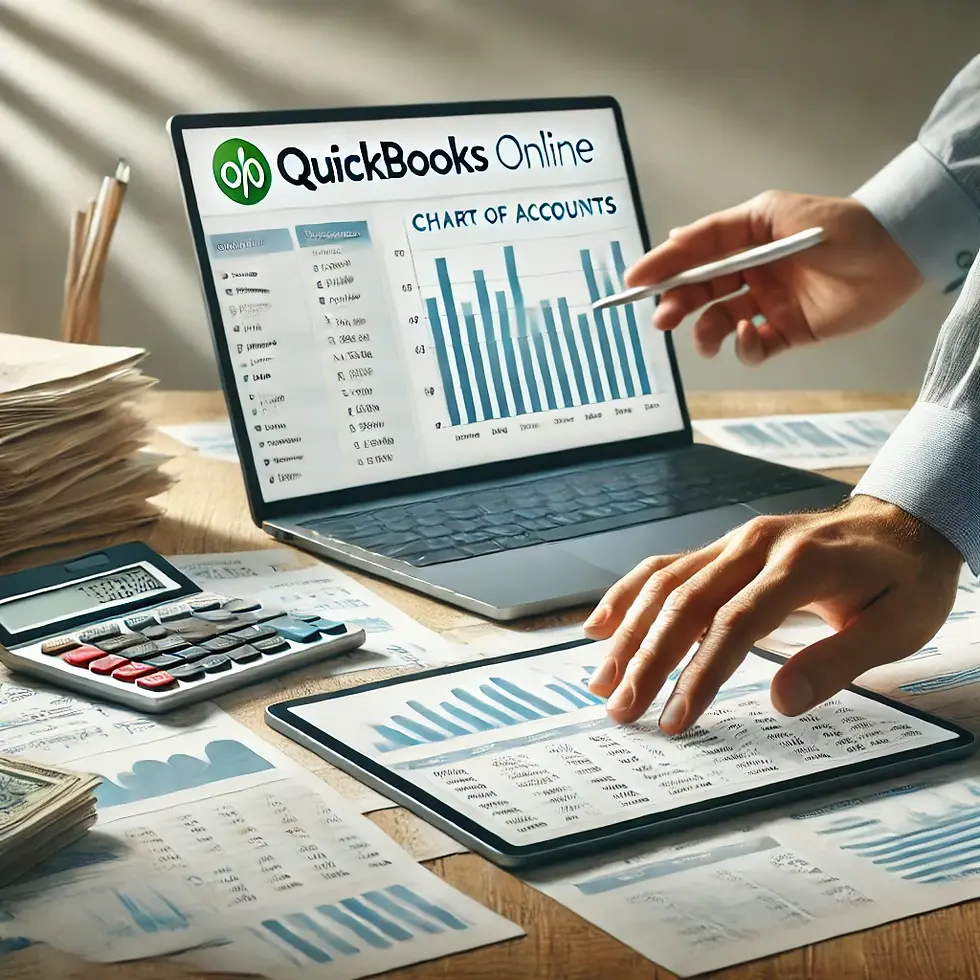How to Clean Up Your QuickBooks Online Books in 7 Simple Steps
- Charles Stoy
- Sep 20, 2024
- 4 min read
Cleaning up your QuickBooks Online (QBO) books might seem like a big task, but just like organizing a messy room, it becomes manageable when broken down into steps. In this blog post, we’ll walk you through how to get your financial records in order. This straightforward approach will help your books be as clean as your workspace, giving you confidence in your numbers and a clearer picture of your business’s financial health.

Follow these simple steps to ensure your books are neat and accurate.
1. Reconcile Your Bank Accounts to Match Your Records
The first step to cleaning up your QBO books is reconciling your bank accounts. This simply means making sure that what’s recorded in QBO matches what your bank shows.
Start by heading over to the Accounting section, then click on Reconcile. Select the bank account you’re working on, and enter the Ending Balance and Statement Date from your bank statement. Now, it’s time to match each transaction. Look at your bank statement and find the same transactions in QBO. If they match, check them off. If there’s a mistake, open the transaction in QBO and fix the amount or date. For example, if your bank shows a $500 deposit but QBO has $450, correct the transaction to show $500.
2. Categorize Transactions to Ensure Everything is Where It Belongs
Every transaction in QBO needs to be categorized, which helps you see exactly where your money is going. Go to the Banking tab, select the bank account you’re reviewing, and start categorizing each transaction under For Review. When you click on a transaction, you’ll choose the appropriate category, like “Office Supplies” or “Sales.” Once that’s done, click Add to move the transaction from “For Review” to “In QuickBooks.”
For example, if you bought paper for the office, categorize that under “Office Supplies” so it’s clear where that money went.
3. Review Unpaid Invoices and Bills to Track What’s Owed
Next, check any unpaid invoices and bills. These are amounts that either customers owe you, or that you owe to others. Go to the Sales tab, then click Invoices, and filter to show Unpaid invoices. Look through these to see if any have already been paid but weren’t marked in QBO. If someone has paid, click on the invoice, hit Receive Payment, and enter the payment details before clicking Save.
For example, if a customer paid $100 through PayPal, find the invoice, mark it as paid, and add PayPal as the payment method. This ensures your income records are accurate.
4. Clean Up the Chart of Accounts by Merging Similar Accounts
Sometimes, you might have multiple accounts in QBO that are used for the same thing. To keep your books organized, you can merge these accounts. Start by going to Accounting, then Chart of Accounts. Look for duplicate or similar accounts. If two accounts are used for the same purpose—like “Advertising Expenses” and “Marketing Expenses”—choose the account you want to keep, then rename the other one to match it exactly. QBO will ask if you want to merge the two, and you’ll confirm this by clicking Yes.
By merging similar accounts, you avoid confusion and make it easier to track your finances.
5. Clear Out Old Entries That No Longer Matter
Sometimes, you might have old transactions that were never completed or duplicates that need to be removed. To find these, go to Reports, then run the Account Transactions report. Scroll through the list and check for old checks that were never cleared or bills that weren’t paid but shouldn’t be there anymore. If you find one, click on the transaction and either delete or void it.
For example, if you wrote a check last year that was never cashed, you can void it to clean up your records.

6. Run Financial Reports to Spot Any Mistakes
After fixing up your transactions, running reports will help you find any remaining issues. Head to the Reports tab and run the Profit and Loss Report and the Balance Sheet. These reports give a summary of your income, expenses, and overall financial standing. Review them carefully, and if something doesn’t look right, click on the transaction to check the details.
For instance, if your Balance Sheet says you have $5,000 in cash, but your bank says $4,500, you’ll need to investigate why there’s a difference.
7. Back Up Your Data for Extra Security
After cleaning up your books, it’s always a good idea to back up important data. QBO automatically saves your information, but you can also export important reports, like your Profit and Loss Report and Balance Sheet, for your own records. Go to Reports, run the report you want, and click Export to download it as an Excel file.
Having a backup of these reports will give you peace of mind if you ever need to access your records outside of QBO.
Cleaning up your QBO books doesn’t have to be difficult. By following these steps, you can keep everything organized and ensure your financials are accurate and ready for any business decision you need to make.






Comments